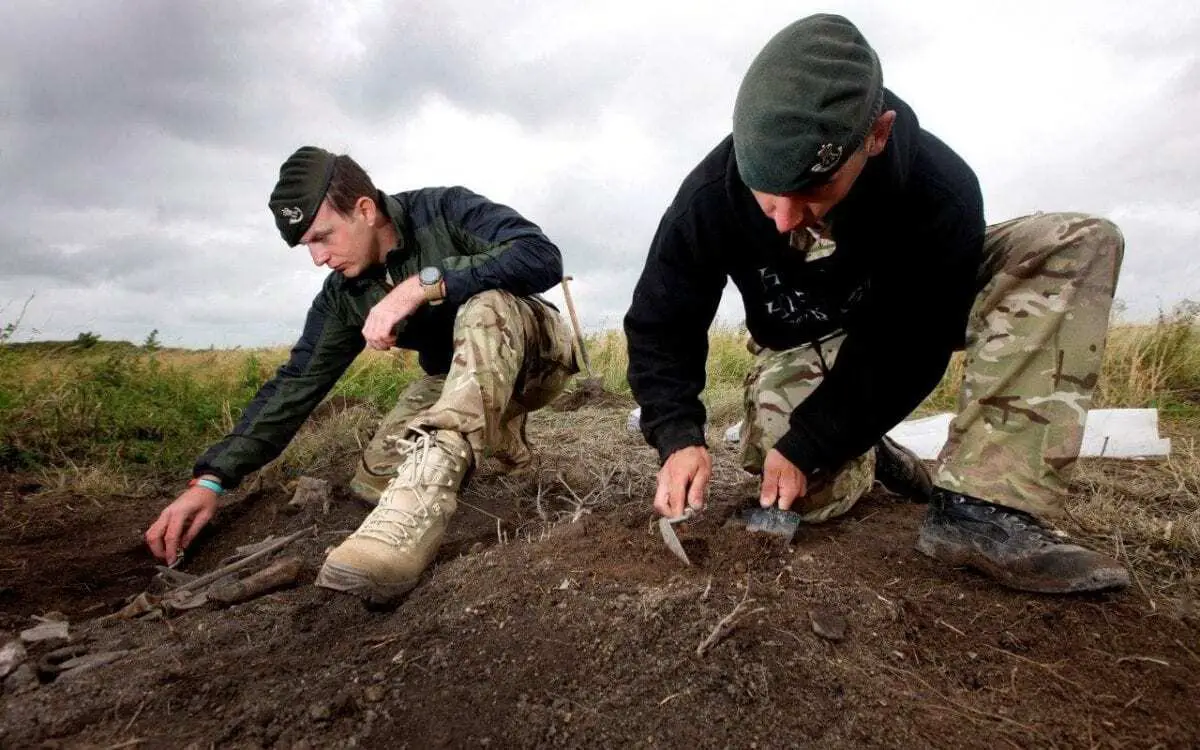A new project has launched that uses archaeology as an aid in the recovery of soldiers injured in conflict.
The program has been studying Iron Age deposits from middens at Chisenbury, where soldiers have been excavating material, including decorated pottery, moved by badgers who have constructed their setts on the prehistoric monument.
The soldiers from 1 Rifles, who are based in Chepstow, will learn a series of excavation, land survey, drawing and mapping techniques and will also enhance their publication and presentation skills.
The project has been directed by Sergeant Diarmaid Walshe of 1 Rifles, with support from a number of partners including English Heritage, Canterbury Archaeological Trust, Wessex Archaeology and the army’s survey unit,135 Geographical Squadron.
1 RIFLES are a Light Roled Infantry Battalion within 3 Commando Brigade, a unique role within the infantry. The 1st Battalion was formed on 25 December 2007 in Alma Barracks, Catterick Garrison. They are an amalgamation of the 1st Battalion, Devonshire and Dorset Light Infantry and the 1st Battalion, Royal Gloucestershire, Berkshire and Wiltshire Light Infantry.
The battalion’s home location is Chepstow which is in the heart of The Rifles recruiting territory in the South West. 1 RIFLES joined 3 Commando Brigade Royal Marines in April 2008 and have worked closely with the Commando Brigade on operations.
As a rifle regiment, a private soldier in The Rifles is known as a Rifleman and Serjeant is spelt in the archaic fashion and soldiers in the regiment wears a Rifle green beret. Many Riflemen have completed the legendary, arduous All Arms Commando Course with a number of them winning 3 Commando Medals, awarded for the student on each Commando Course whose performance and attitude best embodies the Commando ethos.
The Battalion has deployed over 500 Riflemen to Afghanistan where they have a vital mission in providing support to the civil government. The main aim of the operation is to stabilise Afghanistan so that it cannot become a safe haven for terrorists. The emphasis is on working with the police authority and the local people remain the main priority for 1 Rifles. Since the Riflemen have arrived in Afghanistan they have been had major successes in ensuring that local people can live and work in a safe environment without fear of terrorism. Because of the dedication and hard work of 1 Rifles the people of Afghanistan are experiencing a better standard of living and a hope of a safer future.
It is envisaged that the soldiers of 1 Rifles, supported by the archaeological profession on the site they will carry out the excavation and then produce a published report to record their findings at the site.
Sergeant Diarmaid Walshe, a qualified archaeologist, said:
“These soldiers have all endured a lot during operational tours. Due to the complex nature of their physical and mental injuries, sustained in Afghanistan, the army is looking at new and innovative ways to promote recovery. It is my belief that archaeology is the perfect way to achieve this, whilst enhancing their rehabilitation process. We are investing time and resources to aid these soldiers, with a firm belief that fieldwork and recording will aid their recovery.”
The work will also help to inform the long term management of the site as recently featured on the BBC’s ‘Secret Britain’ programme.







